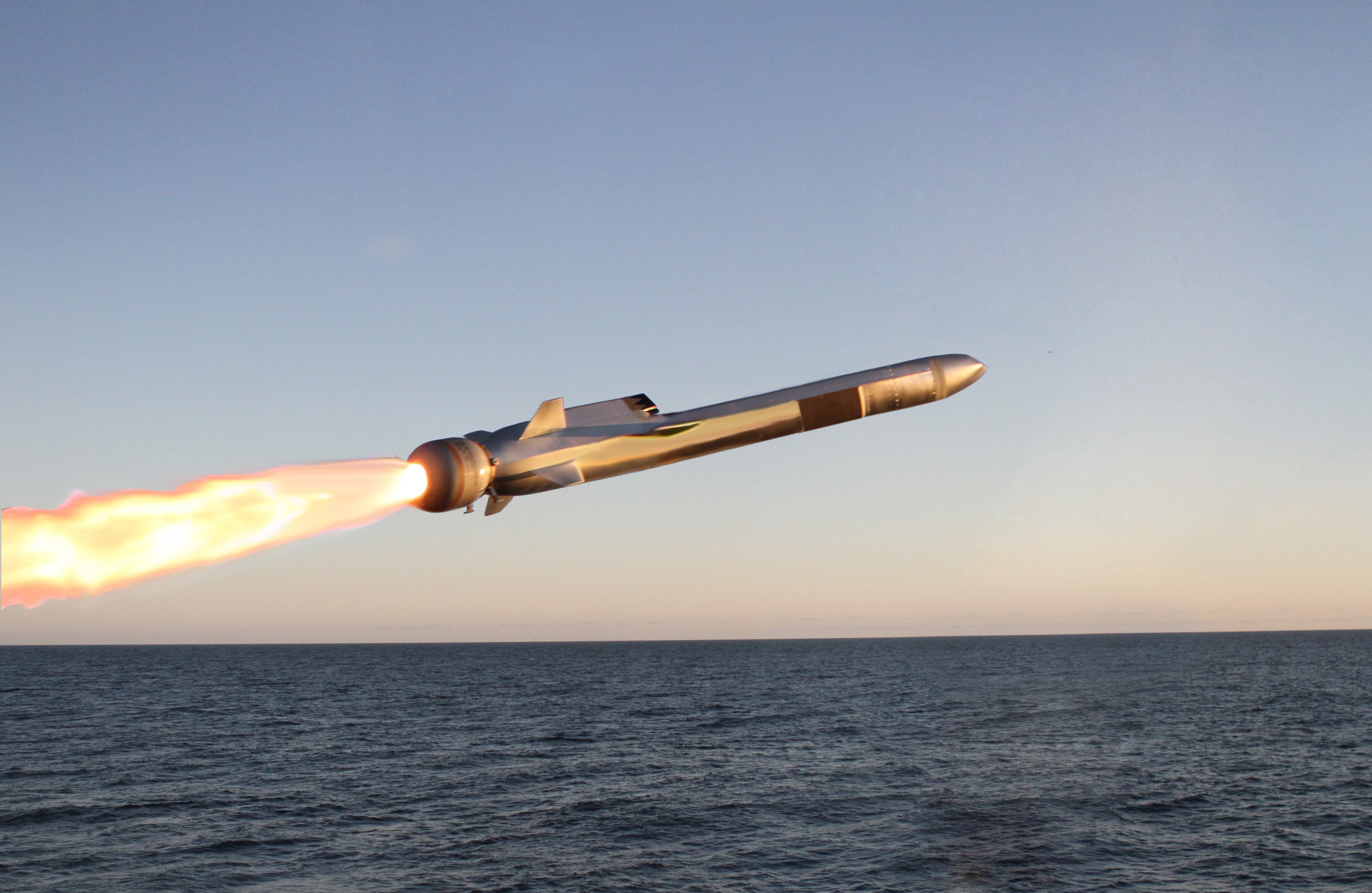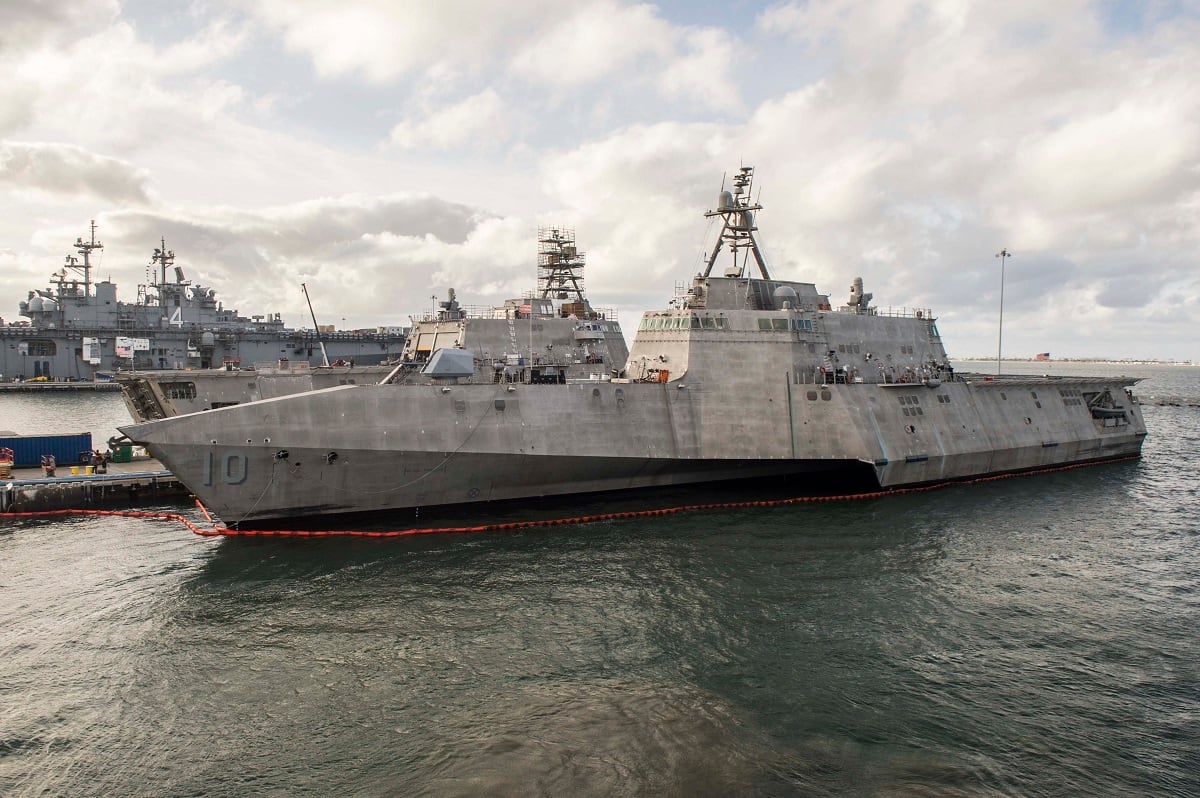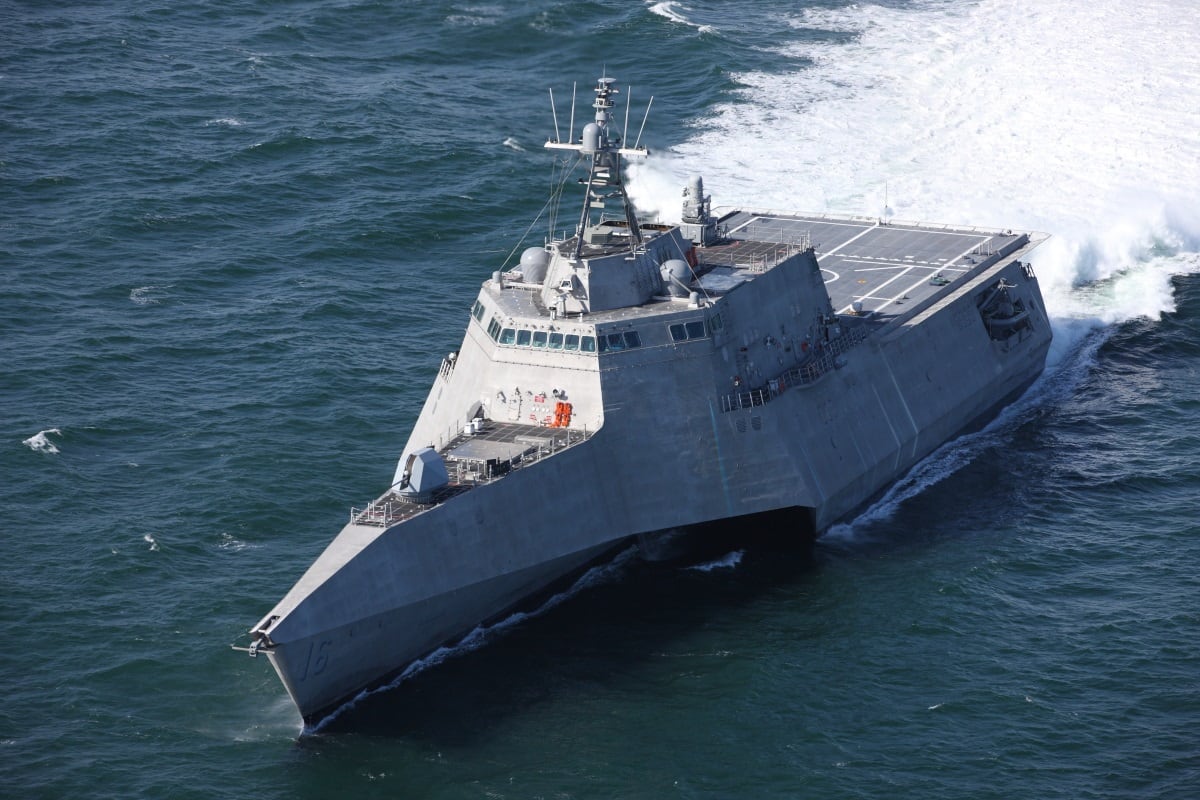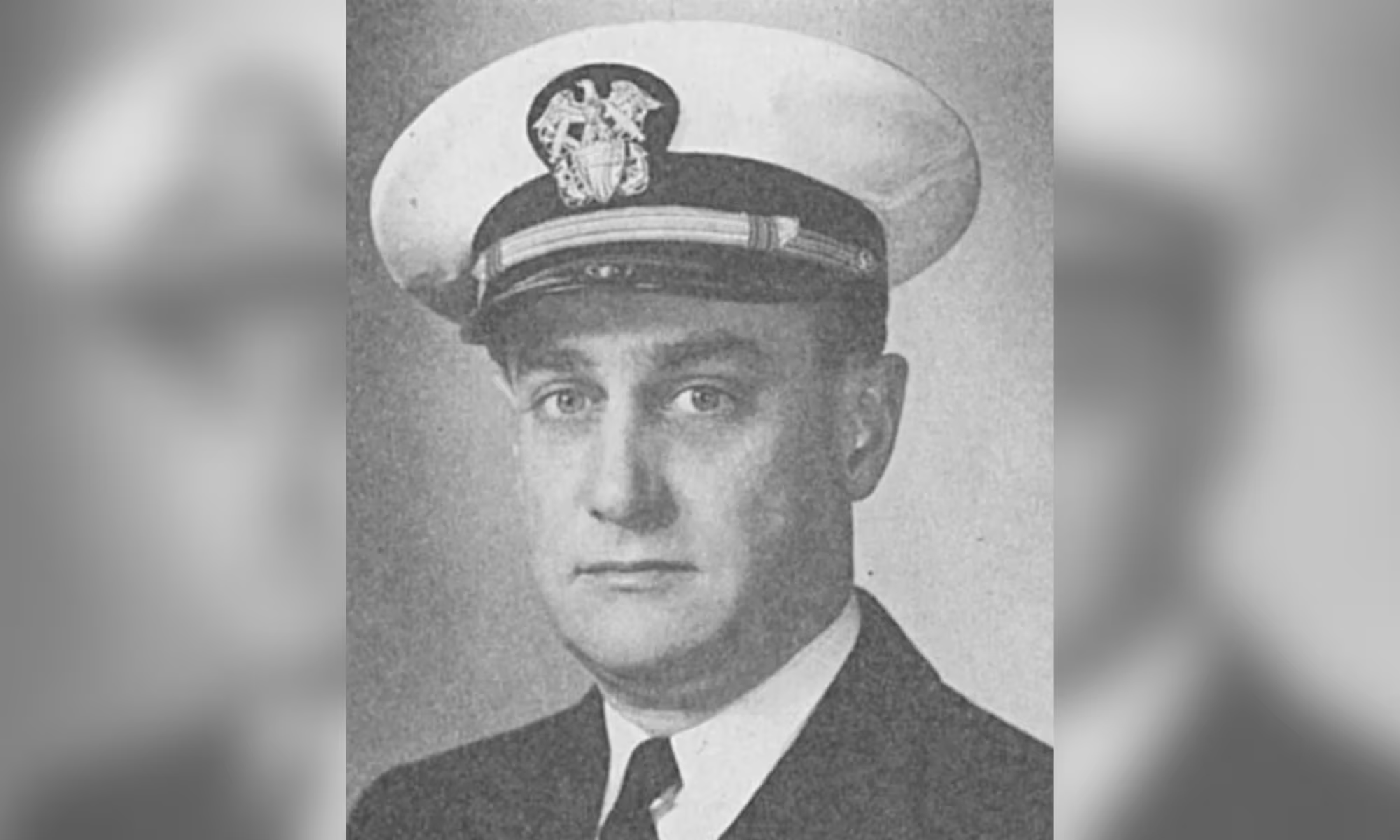WASHINGTON — It can travel more than 100 nautical miles, passively detect an enemy through imaging stored in its computer brain and can kill a target so precisely that an operator can tell it to aim for a specific point on a ship — the engine room or the bridge, for example. And it’s heading to China’s stomping grounds.
The U.S. Navy littoral combat ship Gabrielle Giffords deployed Tuesday from San Diego, California, packing the service’s new Naval Strike Missile, transforming the LCS from an under-gunned concept ship gone awry to a legitimate threat to Chinese warships at significant ranges.
Giffords is the second LCS to deploy this year. The LCS Montgomery also deployed from San Diego in June after a 19-month lapse in LCS deployments as the Navy reworked the way it mans and trains crews for the ships.
Pacific Fleet spokesman Capt. John Gay confirmed Giffords’ deployment, saying the ship got underway Sept. 3, equipped with the Naval Strike Missile and the newly mission-capable MQ-8C Fire Scout drone. The Fire Scout, an over-the-horizon surveillance and targeting platform, achieved its initial operational capability in June.
RELATED

A Navy official speaking on condition of anonymity said the ship was deploying to the Indo-Pacific theater. The official did not elaborate on the ship’s schedule. Giffords’ sister ship, the Montgomery, is currently operating in the Gulf of Thailand, according to a Navy website.
When equipped with the Raytheon/Kongsberg-made Naval Strike Missile, or NSM, and Northrop Grumman’s Fire Scout for surveillance over the horizon, an LCS sitting off the coast of Virginia Beach, Virginia, could destroy a ship sitting off Cape Hatteras, North Carolina. That’s more than 30 miles further than the published range of the current anti-ship missile, the Harpoon, which is in excess of 67 miles.
The Navy has signaled it will also install NSM on its next small surface combatant, FFG(X).
The deployment is the latest sign that the U.S. Navy is gradually upping its game in the Pacific, which during the past decade has seen rising tension over expansive Chinese maritime claims decried by the international community but enforced by China’s Navy, Coast Guard and maritime militias.
The U.S. Navy has made a dedicated push to improve the ranges of its systems, from its missiles and sensors, to its air wing with the development of the MQ-25 Stingray unmanned aerial refueling drone and new conformal fuel tanks for the F/A-18 Super Hornets that increase the speed and range of the service’s mainstay aircraft.
But it’s also a sign that despite a steady drumbeat inside the Pentagon to “move faster” to get new capabilities to the fleet, the Navy’s process is still moving painfully slow. The NSM partially answers the bell for a joint urgent operational need issued by former U.S. Pacific Command head Adm. Robert Willard from early in President Barack Obama’s first term, who identified the need for longer-range anti-ship missiles in the Pacific.
“It’s great that the Navy is doing these improvements, but it’s very incremental,” said Bryan Clark, a retired submarine officer and analyst with the Center for Strategic and Budgetary Assessments. "It has been a decade since the Navy said: ‘Hey, we need to start an unmanned aircraft program of some kind, and we need put better anti-ship missiles on our ships.’ ”
“And here we are, 10 years later, and the MQ-25 is still making its way toward fielding, which won’t happen for several years, and we’re finally deploying a ship with a better anti-ship cruise missile," Clark added. "So kudos to the Navy for doing it, but this is emblematic of the problem the [Department of Defense] has in making the shift toward new ways of fighting. It just can’t get out of its own way to field a new capability in under a decade.”
RELATED

LCS to the Pacific
The surface Navy has signaled its intention to maintain a steady forward presence of littoral combat ships in the region for the foreseeable future. Giffords is the second LCS to deploy under the newly reorganized LCS program.
In an August 2018 interview, Navy Surface Warfare boss Adm. Richard Brown told Defense News that once the deployments started, they weren't going to stop.
“We are on track with the 2016 [chief of naval operations] review of the LCS … and I think we will see the first deployments next year and then happening continuously after that,” said Brown, who heads Naval Surface Force Pacific.
The trimarans Montgomery and Giffords would deploy first from the Pacific, then the mono-hulled Detroit and Little Rock on the East Coast, Brown said.
Getting a more deadly LCS up and running is critical for the surface Navy, which has been rocked by a string of engineering mishaps with the new littoral combat ships — some caused by crew errors — and by the 2017 accidents that claimed the lives of 17 sailors in the Pacific in two separate collisions. The Navy is on track to take delivery of 35 littoral combat ships total, a major chunk of the surface fleet.
The Navy has sought to keep up a consistent presence in the South China Sea, something that will be made easier once more littoral combat ships are regularly deploying. In its 2016 reorganization, the Navy switched from an arcane three-crew-for-two-hulls system to a more traditional blue-and-gold crewing model, where two crews man one hull and switch off at various periods in the ship’s deployment cycle.
That maintains a high operational tempo for the ship without burning out any one crew member, meaning more time forward for the Navy’s only small surface combatant.
Under the Trump administration, the Navy has stepped up its freedom-of-navigation patrols of Chinese claims in the South China Sea, a type of patrol where a Navy ships sail within 12 nautical miles of a Chinese-claimed features to demonstrate that the U.S. has the right to pass peacefully and freely without any preconditions in waters China claims as its territory.
Some have argued that using the Japan-based cruisers and destroyers for such missions is a waste of high-end assets and could instead be accomplished more cheaply and just as effectively with an LCS, freeing up destroyers and cruisers for missions involving their advanced sensors and weaponry.
The Navy just took delivery of the 17th LCS, the Indianapolis, in June. The mono-hull LCS is made by Lockheed Martin with Fincantieri in Marinette, Wisconsin, and all of those variants will be stationed in Mayport, Florida, where LCS Squadron 2 is based. The trimaran version is made by Austal USA, and all of those variants will be stationed on the West Coast.
RELATED

David B. Larter was the naval warfare reporter for Defense News.





